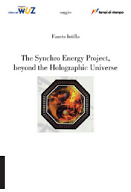 Source: ScienceDaily
Source: ScienceDailyScienceDaily (Aug. 13, 2009) — Scientists at UC Santa Barbara have devised a new type of superconducting circuit that behaves quantum mechanically – but has up to five levels of energy instead of the usual two. The findings are published in the August 7 issue of Science.
These circuits act like artificial atoms in that they can only gain or lose energy in packets, or quanta, by jumping between discrete energy levels. "In our previous work, we focused on systems with just two energy levels, 'qubits,' because they are the quantum analog of 'bits,' which have two states, on and off," said Matthew Neeley, first author and a graduate student at UCSB.
He explained that in this work they operated a quantum circuit as a more complicated artificial atom with up to five energy levels. The generic term for such a system is "qudit," where 'd' refers to the number of energy levels –– in this case, 'd' equals five.
"This is the quantum analog of a switch that has several allowed positions, rather than just two," said Neeley. "Because it has more energy levels, the physics of a qudit is richer than for just a single qubit. This allows us to explore certain aspects of quantum mechanics that go beyond what can be observed with a qubit."
Just as bits are used as the fundamental building blocks of computers, qubits could one day be used as building blocks of a quantum computer, a device that exploits the laws of quantum mechanics to perform certain computations faster than can be done with classical bits alone. "Qudits can be used in quantum computers as well, and there are even cases where qudits could be used to speed up certain operations with a quantum computer," said Neeley. "Most research to date has focused on qubit systems, but we hope our experimental demonstration will motivate more effort on qudits, as an addition to the quantum information processing toolbox."
The senior co-author of the paper is John M. Martinis, professor of physics at UCSB. Other co-authors from UCSB are: Markus Ansmann, Radoslaw C. Bialczak, Max Hofheinz, Erik Lucero, Aaron D. O'Connell, Daniel Sank, Haohua Wang, James Wenner, and Andrew N. Cleland. Another co-author, Michael R. Geller, is from the University of Georgia.
Adapted from materials provided by University of California - Santa Barbara.
He explained that in this work they operated a quantum circuit as a more complicated artificial atom with up to five energy levels. The generic term for such a system is "qudit," where 'd' refers to the number of energy levels –– in this case, 'd' equals five.
"This is the quantum analog of a switch that has several allowed positions, rather than just two," said Neeley. "Because it has more energy levels, the physics of a qudit is richer than for just a single qubit. This allows us to explore certain aspects of quantum mechanics that go beyond what can be observed with a qubit."
Just as bits are used as the fundamental building blocks of computers, qubits could one day be used as building blocks of a quantum computer, a device that exploits the laws of quantum mechanics to perform certain computations faster than can be done with classical bits alone. "Qudits can be used in quantum computers as well, and there are even cases where qudits could be used to speed up certain operations with a quantum computer," said Neeley. "Most research to date has focused on qubit systems, but we hope our experimental demonstration will motivate more effort on qudits, as an addition to the quantum information processing toolbox."
The senior co-author of the paper is John M. Martinis, professor of physics at UCSB. Other co-authors from UCSB are: Markus Ansmann, Radoslaw C. Bialczak, Max Hofheinz, Erik Lucero, Aaron D. O'Connell, Daniel Sank, Haohua Wang, James Wenner, and Andrew N. Cleland. Another co-author, Michael R. Geller, is from the University of Georgia.
Adapted from materials provided by University of California - Santa Barbara.














